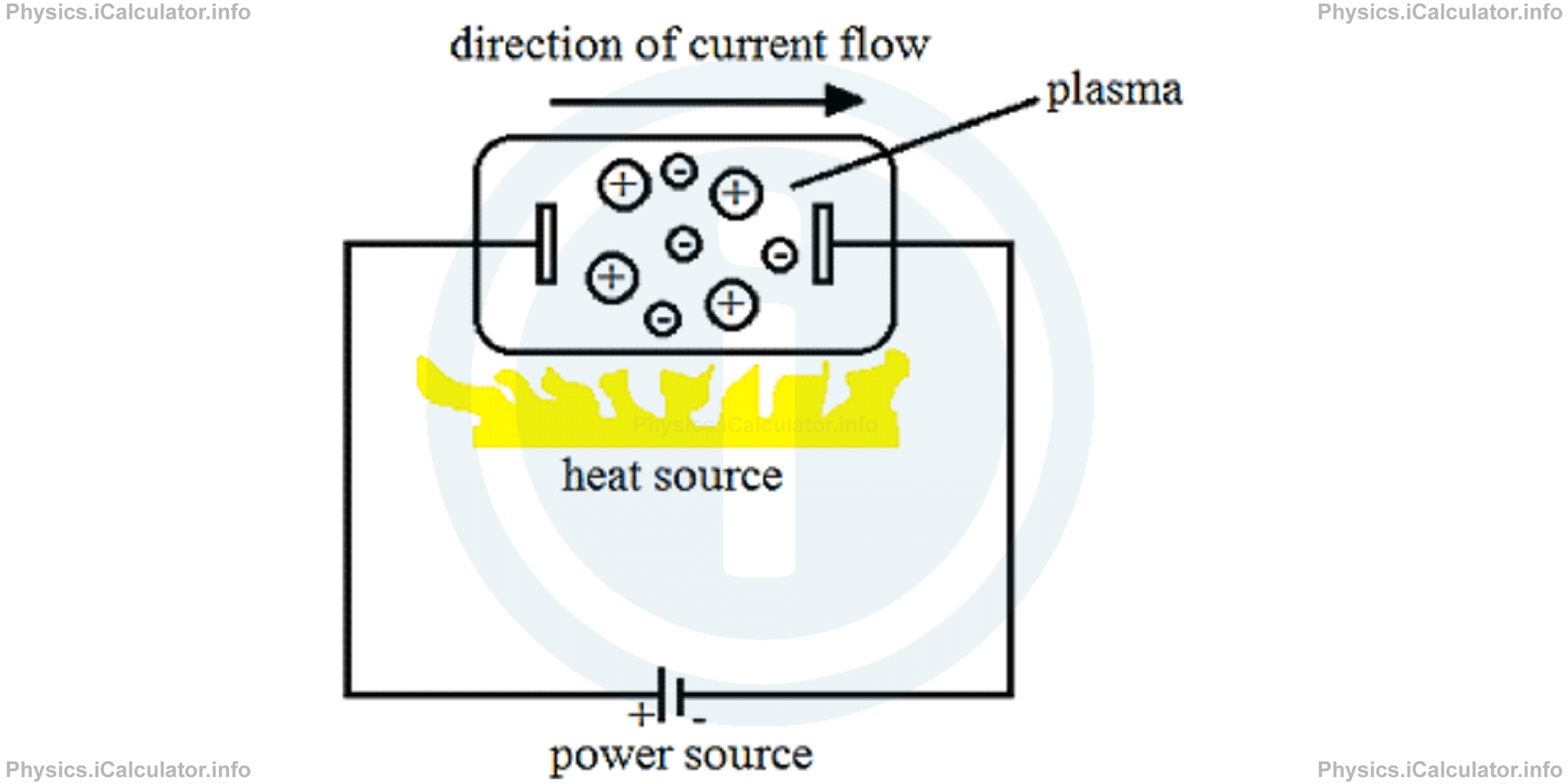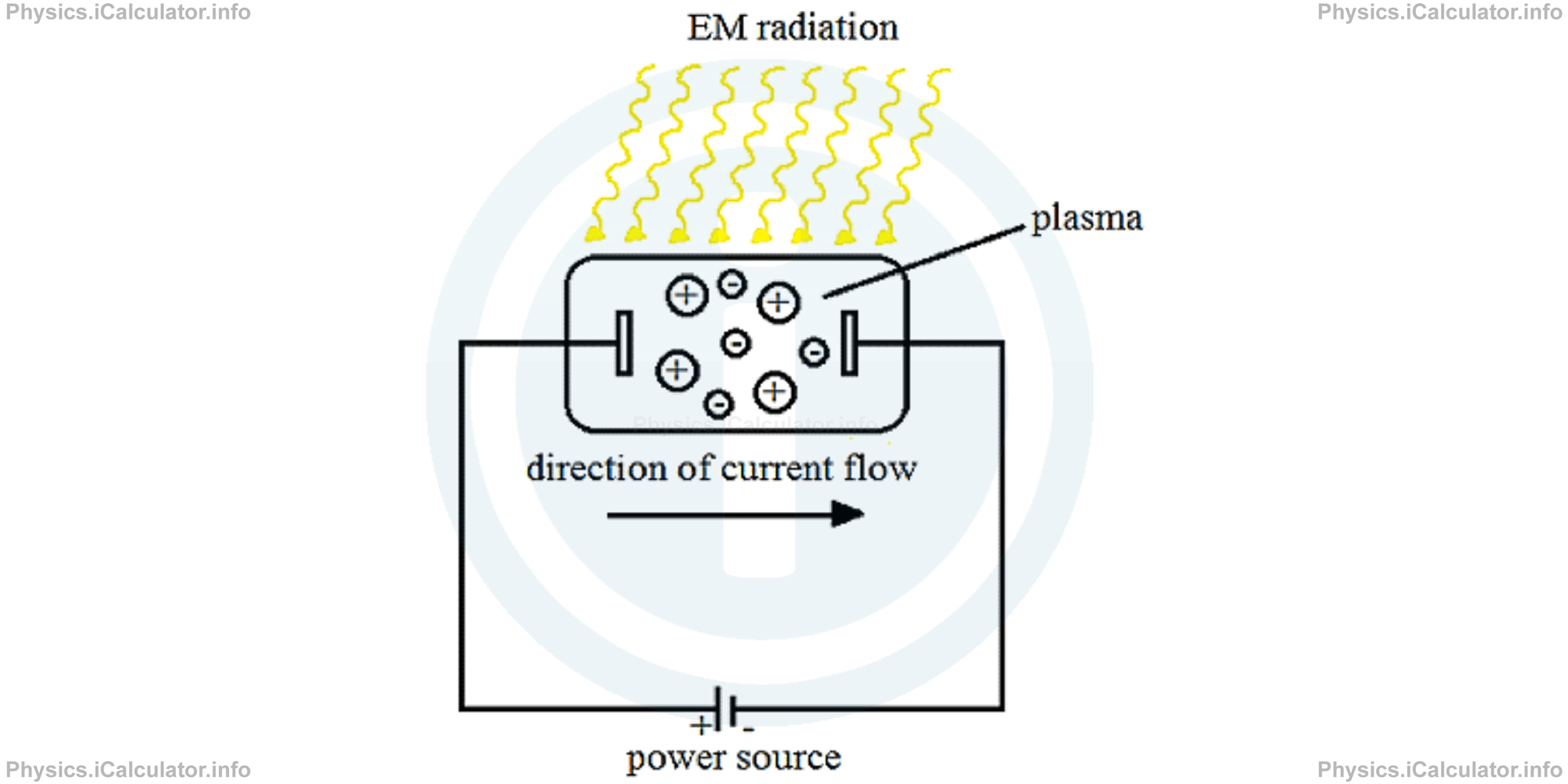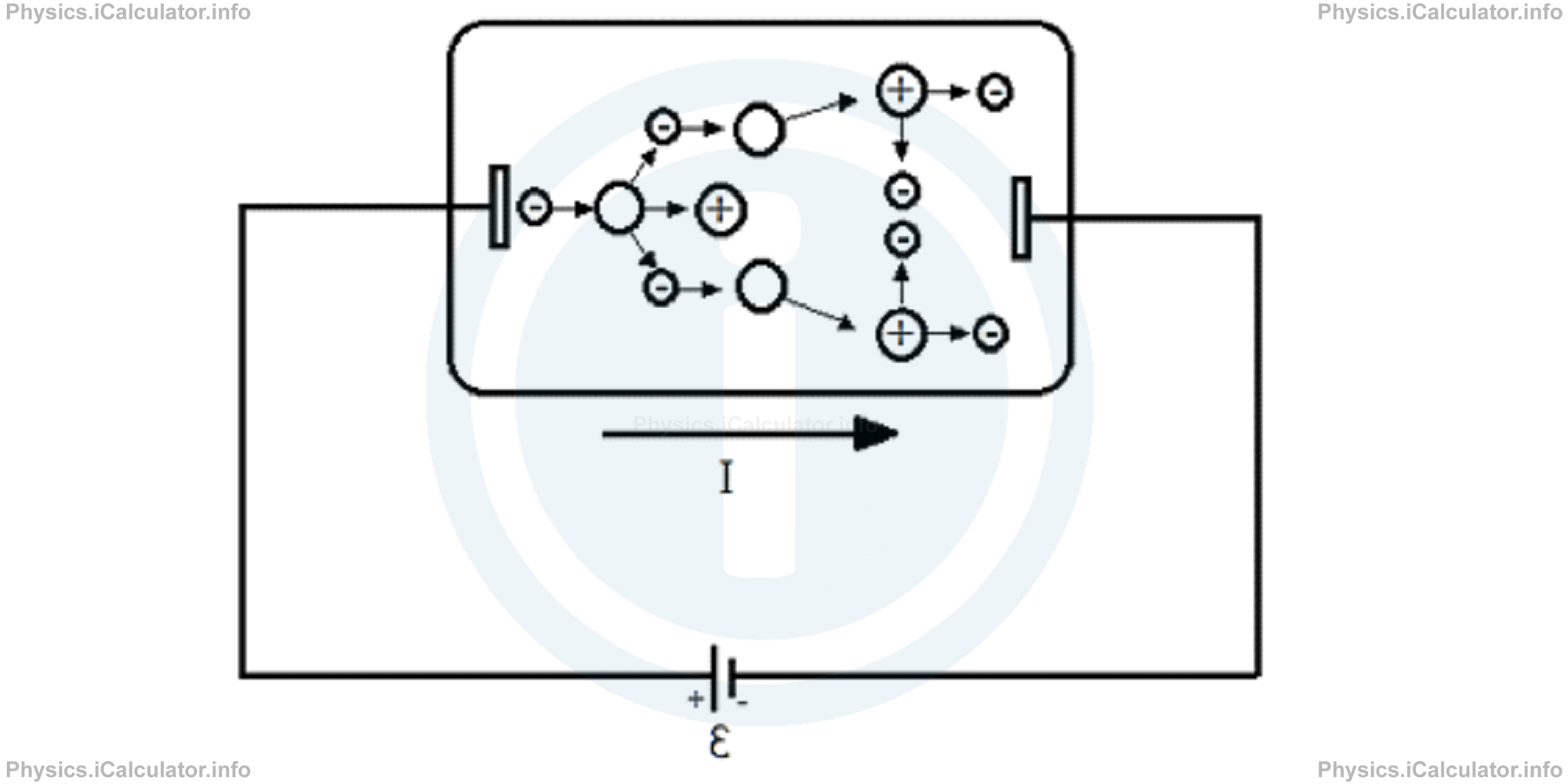Menu
Physics Lesson 15.8.5 - Electric Current in Gases
Please provide a rating, it takes seconds and helps us to keep this resource free for all to use
Welcome to our Physics lesson on Electric Current in Gases, this is the fifth lesson of our suite of physics lessons covering the topic of Miscellaneous, you can find links to the other lessons within this tutorial and access additional physics learning resources below this lesson.
Electric Current in Gases
In normal conditions, gases are insulators. When a gas is heated, the kinetic energy of its molecules increases. When this kinetic energy exceeds the binding energy (i.e. the energy that keep electrons bound with the atoms), electrons escape from atoms and as a result, atoms begin to ionise. If the temperature of gas is high enough, the gas becomes a mixture of positive ions and free electrons. Such a state is known as plasma and it represents the fourth state of matter besides solid, liquid and gas states we have explained earlier. A material in plasma state is a good conductor of electricity as it contains a lot of free charges.

Heating the gas is not the only method to obtain free charges. Electromagnetic radiation is another factor that produces electric current in metals due to ionization of gas particles, as shown in the figure below.

A third factor that can cause gas ionization (and therefore an electric current) is a high potential difference produced due to the existence of an electric field inside the gas. For this, a power source such as a battery is needed. Electrons accelerate due to the electric field and gain a high kinetic energy over a small distance. When electrons strike the gas atoms, they pull out new electrons from atoms turning them into positive ions. This kind of ionization is called discharge by self-ionisers. Look at the figure below.

The phenomenon of discharge by self-ionisation is used to construct light bulbs and self-illuminating structures such as billboards, light tubes etc.
You have reached the end of Physics lesson 15.8.5 Electric Current in Gases. There are 5 lessons in this physics tutorial covering Miscellaneous, you can access all the lessons from this tutorial below.
More Miscellaneous Lessons and Learning Resources
Whats next?
Enjoy the "Electric Current in Gases" physics lesson? People who liked the "Miscellaneous lesson found the following resources useful:
- Electric Current In Gases Feedback. Helps other - Leave a rating for this electric current in gases (see below)
- Electrodynamics Physics tutorial: Miscellaneous. Read the Miscellaneous physics tutorial and build your physics knowledge of Electrodynamics
- Electrodynamics Revision Notes: Miscellaneous. Print the notes so you can revise the key points covered in the physics tutorial for Miscellaneous
- Electrodynamics Practice Questions: Miscellaneous. Test and improve your knowledge of Miscellaneous with example questins and answers
- Check your calculations for Electrodynamics questions with our excellent Electrodynamics calculators which contain full equations and calculations clearly displayed line by line. See the Electrodynamics Calculators by iCalculator™ below.
- Continuing learning electrodynamics - read our next physics tutorial: Electric Current. Current Density
Help others Learning Physics just like you
Please provide a rating, it takes seconds and helps us to keep this resource free for all to use
We hope you found this Physics lesson "Miscellaneous" useful. If you did it would be great if you could spare the time to rate this physics lesson (simply click on the number of stars that match your assessment of this physics learning aide) and/or share on social media, this helps us identify popular tutorials and calculators and expand our free learning resources to support our users around the world have free access to expand their knowledge of physics and other disciplines.
Electrodynamics Calculators by iCalculator™
- Amount Of Substance Obtained Through Electrolysis Calculator
- Charge Density Calculator
- Electric Charge Stored In A Rc Circuit Calculator
- Electric Field In Terms Of Gauss Law Calculator
- Electric Power And Efficiency Calculator
- Electron Drift Velocity Calculator
- Equivalent Resistance Calculator
- Force Produced By An Electric Source Calculator
- Joules Law Calculator
- Ohms Law Calculator
- Potential Difference In Rc Circuit Calculator
- Resistance Due To Temperature Calculator
- Resistance Of A Conducting Wire Calculator